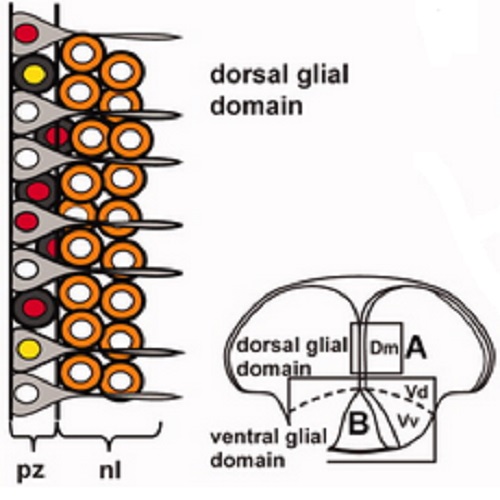Heterogeneity and Fgf dependence of adult neural progenitors in the zebrafish telencephalon.
Adult telencephalic neurogenesis is a conserved trait of all vertebrates studied. It has been investigated in detail in rodents, but very little is known about the composition of neurogenic niches and the cellular nature of progenitors in nonmammalian vertebrates. To understand the components of the progenitor zones in the adult zebrafish telencephalon and the link between glial characteristics and progenitor state, we examined whether canonical glial markers are colocalized with proliferation markers. In the adult zebrafish telencephalon, we identify heterogeneous progenitors that reside in two distinct glial domains. We find that the glial composition of the progenitor zone is linked to its proliferative behavior. Analyzing both fast-cycling proliferating cells as well as slowly cycling progenitors, we find four distinct progenitor types characterized by differential expression of glial markers. Importantly, a significant proportion of progenitors do not display typical radial glia characteristics. By blocking or activating Fgf signaling by misexpression of a dominant negative Fgf-receptor 1 or Fgf8a, respectively, we find that ventral and dorsal progenitors in the telencephalon also differ in their requirement for Fgf signaling. Together with data on the expression of Fgf signaling components in the ventricular zone of the telencephalon, this suggests that Fgf signaling directly regulates proliferation of specific subsets of adult telencephalic progenitors in vivo. Taken together our results show that adult neural progenitor cells are heterogeneous with their respect to distribution into two distinct glial domains and their dependence upon Fgf signaling as a proliferative cue in the zebrafish telencephalon.
Back to list
